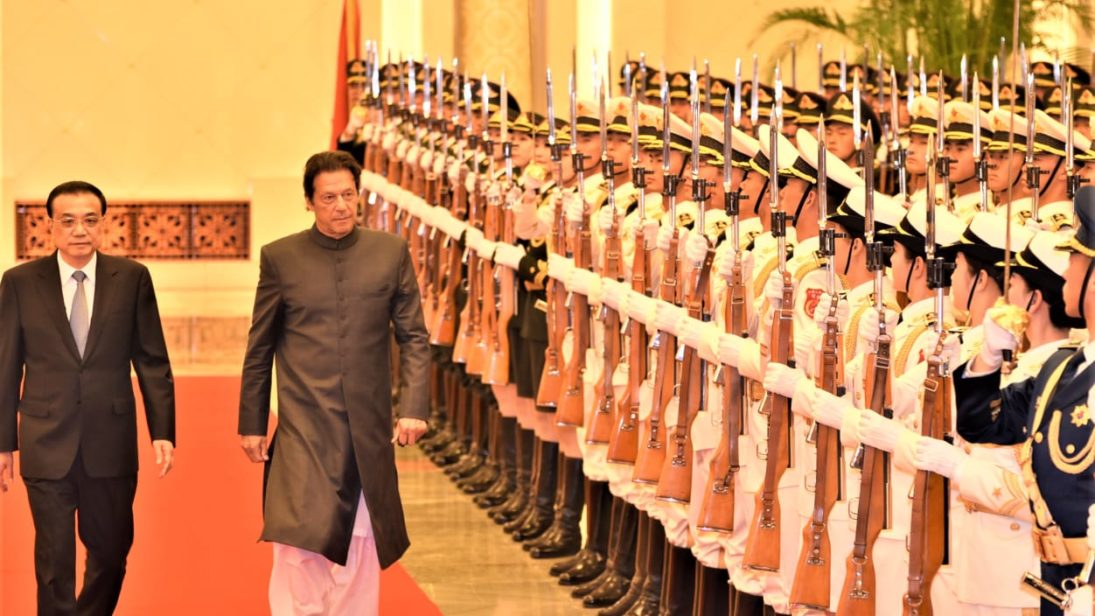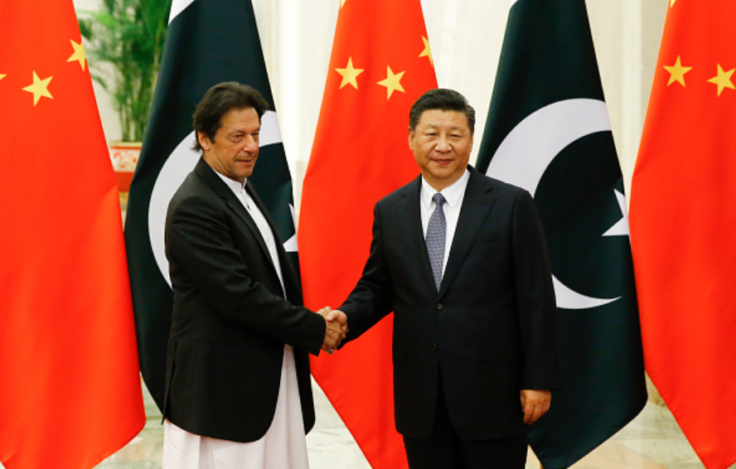
Recently, Pakistan and China celebrated 69 years of diplomatic relations with the Chinese Foreign Ministry spokesperson maintaining that the friendship between the two nations remains “iron clad.” Over the past seven decades China-Pakistan relations have evolved considerably, recently drawing greater wariness from the United States as it enters into an increasingly competitive relationship with China. In a recent policy memo, renowned South Asia watcher, Daniel Markey, has advised U.S. policymakers to explore new strategies for addressing strong China-Pakistan ties, essentially, in ways that broaden the U.S.-Pakistan relationship and focus on regional stability. In doing so, Markey proposes “out-of-box” ideas for the current administration in Washington, which has been critical of China-Pakistan ties particularly in relation in China-Pakistan Economic Corridor (CPEC) projects.
This memorandum has also been of interest to Pakistani analysts and policymakers, as it critically analyzes recent developments associated with CPEC and the bilateral relationship between Islamabad and Beijing. For the United States to influence China-Pakistan dynamics requires innovative thinking which Markey refers to as more “problem solving” and less “finger-wagging”. This sanguine advice needs to be applied to overall U.S.-Pakistan relationship, which is marked by strategic divergences on the U.S. role in South Asia, and a degree of mutual mistrust. Meanwhile, despite the attention given to readjustments in CPEC, Beijing-Islamabad ties have in fact deepened in recent years.
Broadening U.S.-Pakistan Policy
Broadly, Markey’s policy recommendations are set against the recent public pushback from the Trump administration against China’s growing role in Pakistan. He underscores that while Beijing and Islamabad may have different expectations from expanded ties, the relationship is here to stay. Consequently, U.S. policymakers need to acknowledge China’s presence in Pakistan and South Asia, and modify their approach towards Pakistan in regard to its engagement with China. A smarter strategy would be a non-zero-sum policy expanding space for U.S. policymakers to constructively engage with Pakistan on larger political and security issues, or even cooperate with China on issues of regional stability including India-Pakistan crisis management and Afghanistan. Markey notes that this approach will allow U.S. policymakers to keep an eye on long-term strategic trends in the China-Pakistan relationship – such as security cooperation – which can potentially enable Beijing to project power in South Asia and Middle East and alter strategic dynamics in the region.
While Pakistan policymakers caution against unintended consequences of coming great power competition, deepening ties with China suggest an unstated choice for China over the United States – with an eye towards long-term trends.
Avoiding the Competition Trap
The essence of Markey’s argument is that Washington should avoid the trap of the great power competition while dealing with China’s growing influence in Pakistan. Importantly noting that as U.S.-China great power competition becomes increasingly global, Pakistan, like many countries across Asia, will prefer not to pick a side in the brewing geopolitical competition. However, this discounts the weight of recent history and near total breakdown of the U.S.-Pakistan relationship, particularly, after Trump announced new South Asia strategy and subsequently suspended security assistance to Pakistan in 2017-2018, over charges that Pakistan was not doing enough to tackle militancy. This followed years of at times almost adversarial engagement during the War on Terror. When U.S.-China competition comes to South Asia, Pakistani policymakers increasingly see Washington supporting New Delhi as illustrated by 2005 India-U.S. civil nuclear deal, and later making India a crucial pillar of the Indo-Pacific strategy. The natural policy choice is to deepen cooperation with China, particularly in the defense and security realm, with focus on joint military exercises of air, land, and naval forces. Consequently, while, Pakistan policymakers caution against unintended consequences of coming great power competition, deepening ties with China suggest an unstated choice for China over the United States – with an eye towards long-term trends. Pakistan essentially views deepening relationship with China as cooperative engagement, while, with the United States, it is competitive engagement.
In the long-term, for Pakistani policymakers the China-Pakistan relationship remains a constant in South Asian security dynamics. As Markey notes, there have been unfulfilled expectations and diplomatic setbacks in China-Pakistan relations from 2018 to 2020 – such as slowdown of CPEC projects or China lifting its technical hold to add Masood Azhar to a UNSC 1267 Sanctions Committee blacklist. However, China has also offered support to Pakistan and enhanced strategic coordination after controversial Indian actions to repeal the special status of Jammu & Kashmir in August, 2019. Though Beijing itself was affected due to changes introduced in Ladakh region and it expressed concern on situation in Jammu & Kashmir, it was only after Islamabad reached out to Beijing, that China called for an emergency consultations among the United Nations Security Council (UNSC) members on Kashmir issue. While it was a closed-doors informal meeting, it recognized Pakistan’s position that Kashmir remains an international dispute.

Beijing further restated its support for Kashmir as an international issue earlier this year. For Pakistan, this was a strong show of Beijing’s support – one that could not be matched by Washington, which has remained neutral, making it unlikely supporter of one of Pakistan’s core strategic issues in contrast to Beijing. Although China called for UNSC consultations at the request of Pakistan, the fact that Islamabad turned to Beijing to bring up this issue signifies the view that it is able to raise core strategic interests with Beijing. That Islamabad is likely to look to Beijing as its key supporter in this area, constricts space for Washington to balance against China in Pakistan.
The United States’ prospects of overlooking China-Pakistan relations, or cooperating with China on interests of stability in India-Pakistan crisis, are further constrained by America’s own National Security Strategy and National Defense Strategy which term China as a “revisionist power” and emphasize balancing against China through enhanced defense and economic cooperation with Asian and Pacific nations. While Markey proposes possible direct Washington-Beijing talks on crisis de-escalation in the region as an area of tactical cooperation, Beijing seems reluctant to discuss such issues with Washington, as it continues to respond to Washington’s shifting policy with calls for respecting each other’s “core interests and major concerns” instead of engaging in “zero-sum games” and “Cold-War mentality”.
While China and the United States should be cautious about a competition trap, as proposed by Markey, the underpinnings of a competition are increasingly in place. For instance, while space exists for tactical coordination between Beijing and Washington in India-Pakistan crisis management, for Islamabad, Beijing has started to be viewed as a more neutral crisis manager than the United States. During February 2019 crisis, while Washington supported India’s “right to self-defense” early on, Beijing called for respecting “sovereignty and territorial integrity” following Indian airstrikes in Balakot. As Pakistani policymakers deepen their relationship with China, slowly, but surely, strategic competition is already making inroads in South Asia.
The record of past two years shows that as CPEC has retreated into the background, due to Pakistan’s economic crisis, other issues, including the 2019 India-Pakistan crisis, developments in Kashmir, and statements from Trump administration officials, have kept Beijing and Islamabad engaged while deepening traditional defense and security cooperation.
Bilateral Relations: More than just CPEC
One of Markey’s crucial observations is that CPEC represents only a component of the broader China-Pakistan relationship. With the advent of CPEC, much of policy discourse has focused on analyzing developments in the China-Pakistan relationship from the lens of CPEC. Even in Pakistan, CPEC has often overshadowed nuanced policy debate on the relationship with China. Yet, the record of past two years shows that as CPEC has retreated into the background, due to Pakistan’s economic crisis, other issues, including the 2019 India-Pakistan crisis, developments in Kashmir, and statements from Trump administration officials, have kept Beijing and Islamabad engaged while deepening traditional defense and security cooperation. On issues central to Pakistan’s foreign policy and national security interests such as India, Kashmir, Afghanistan, strategic partnership with China, and economic development cooperation, Islamabad has multiple convergences with Beijing. In contrast, Washington pushes back against China-Pakistan bilateral cooperation, and calls for greater role of India in South Asia, and is viewed as deferring more to Indian concerns on Pakistan. More importantly from Pakistan’s perspective, in recent months Washington has abstained from taking a more neutral position on new developments in Kashmir.
A key takeaway from Markey’s essay is that the United States is absent from the contemporary Pakistan in more ways than one. An earlier book of Markey’s on U.S.-Pakistan relationship was titled No Exit from Pakistan. While Washington has not left Pakistan altogether, it appears near the exit. Can Washington remain relevant in Pakistan in the long run? Markey suggests enhanced engagement in areas of education, immigration, trade technical assistance, may offer the United States a way to compete with China for influence. However, given present direction of U.S. South Asia policy, more alignment towards Pakistan based on areas like enhanced defense and security cooperation is unlikely. However, while strategic convergence with China makes it an attractive long-term partner for Pakistan, Islamabad, would still strive to avoid a scenario where it will be forced to choose between the two powers. This should guide the U.S. strategy in dealing with China’s new role in Pakistan, and with Pakistan itself.
***
Click here to read this article in Urdu.
Image 1: Pakistan PMO via Twitter
Image 2: Thomas Peter-Pool via Getty Images


